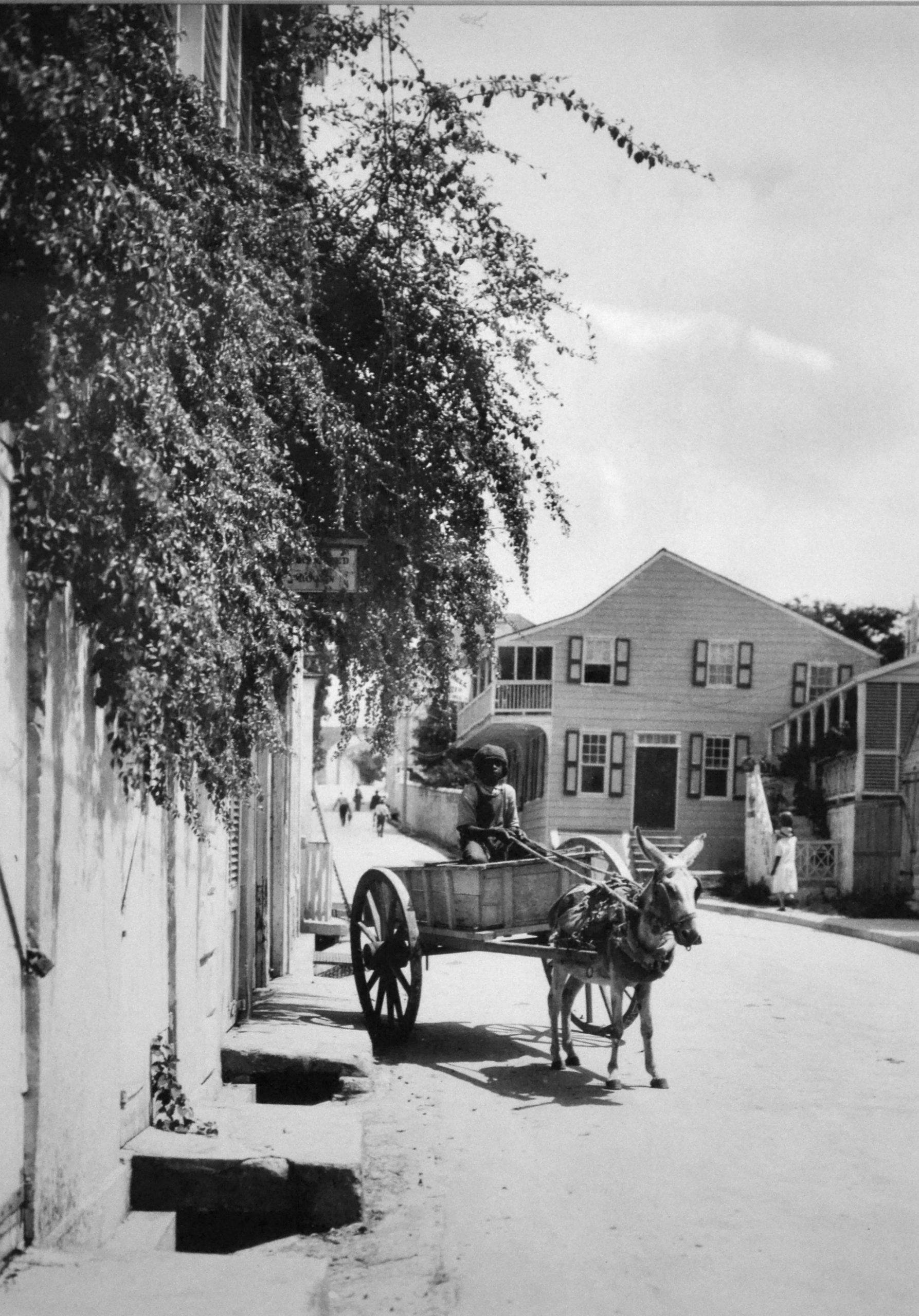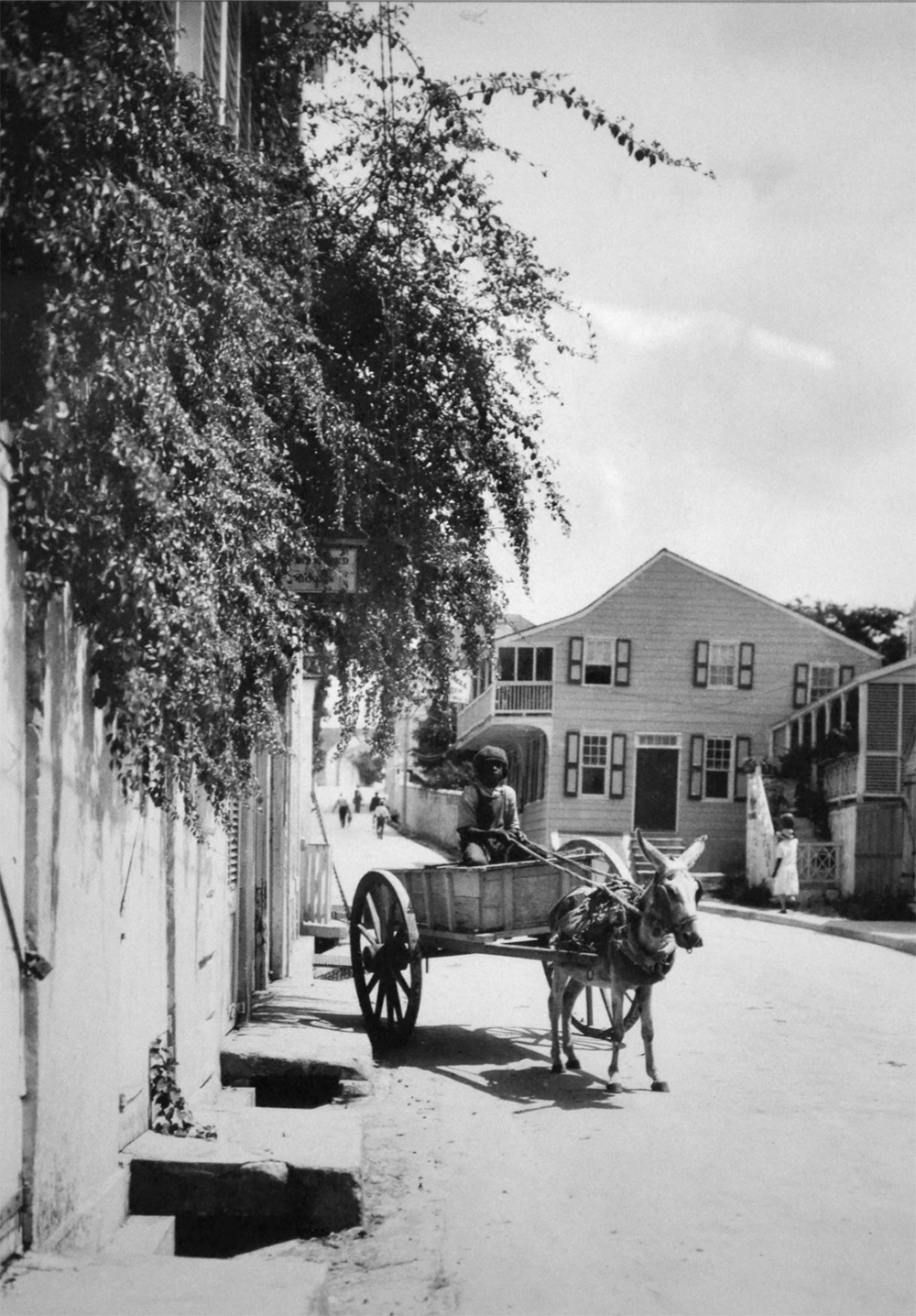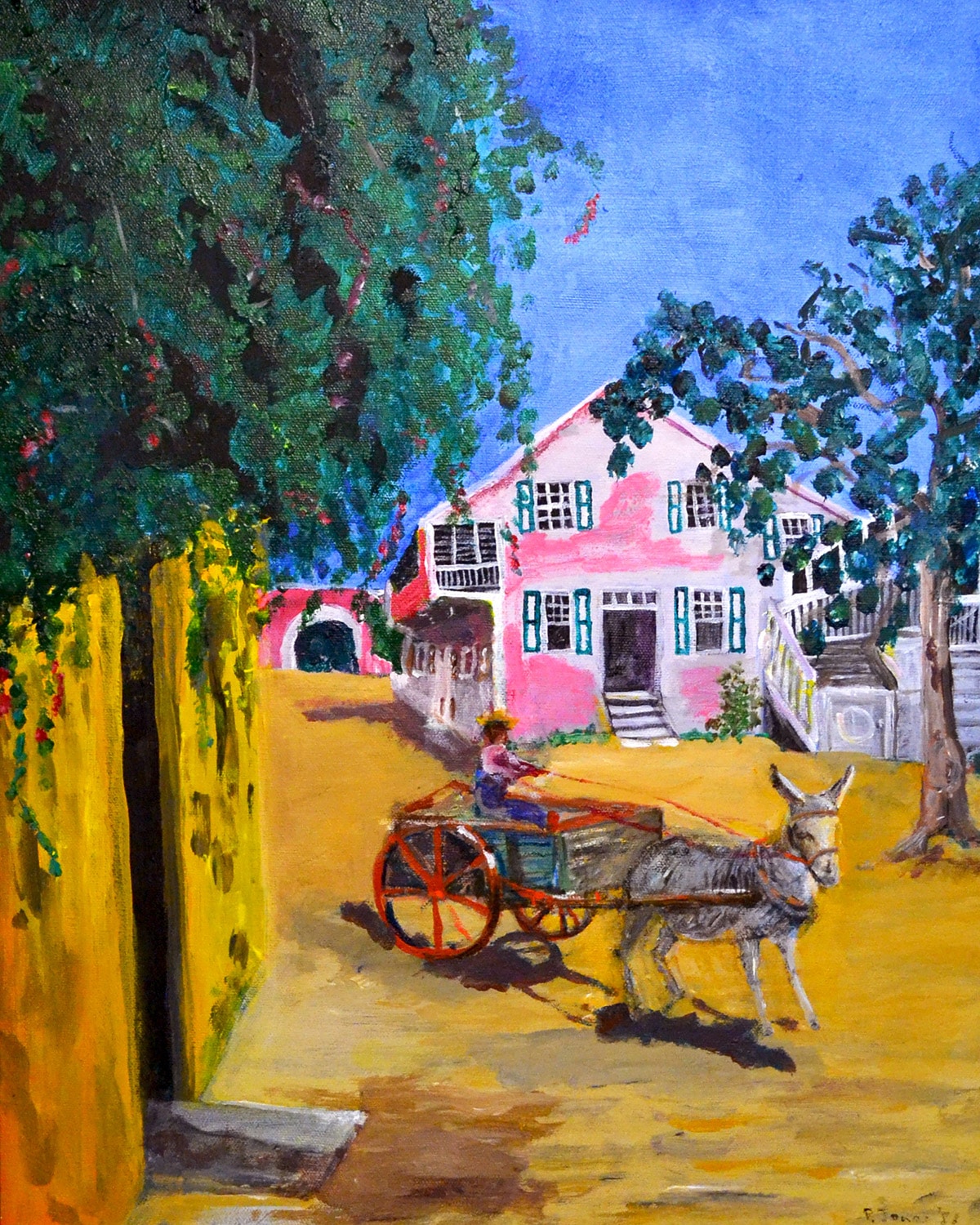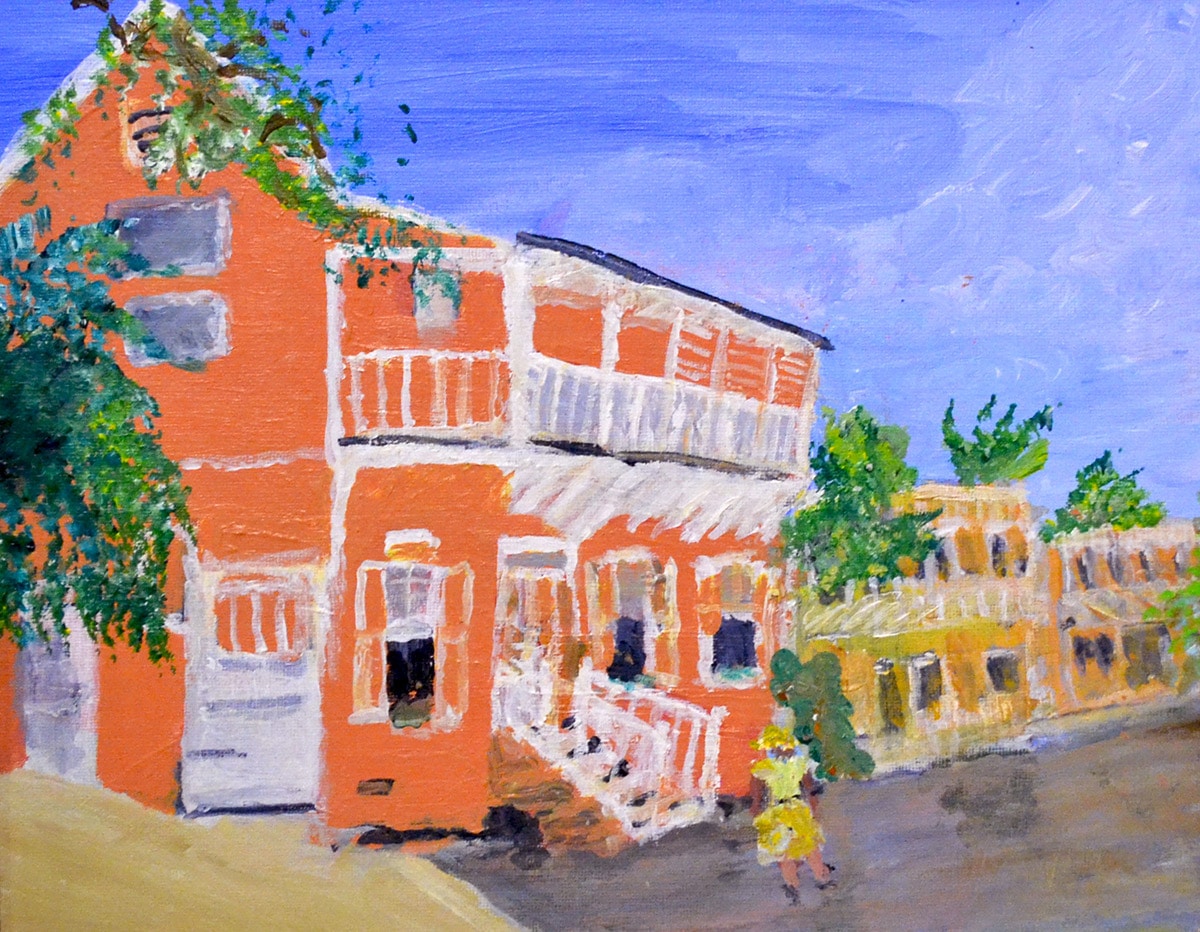
By Natalie Willis
There is this assumed romanticism of the past for many, especially when looking the quaint images of Nassau-from-the-past. But here, we find it is often laced with a pain of looking at where we were as a nation, those issues we faced then and the echoes of this past that we deal with now. “Untitled (Balcony House on Market Street)” (ca. 1920) by James Osborne “Doc” Sands shows us a Bahamas that is still reeling and reconfiguring after the abolishment of slavery, and post-apprenticeship, even in 1920. The legacy of racial power structures inherited by The Bahamas, and by the wider Caribbean region, was very much present and felt. The tiering of whites, mixed-race, and Black Bahamians is still something we feel today, even with all the work done to dismantle this hegemony.
“Doc” Sands was a Bahamian of European descent, born in Eleuthera, and in taking over the photo studios of his American predecessors like Jacob Coonley, continued the work of photographing the country as the picturesque ideal that we have become so renowned for. These old photographs serve to help satiate our desperate need for physical historical relics and documentation of the past, as we are, for the most part, a people who struggle to understand our history and place like much of the Black diaspora.

“Untitled (Balcony House on Market Street)” (ca 1920), James Osborne “Doc” Sands, digital print on archival paper, 11 x 14. Part of the National Collection.
With recent accounts of the possibility of the last slave ship to travel to the US having been found, it is made clear to us just how much of our history we know through feeling, through oral legacy, through the hard work of sensitive historians, but just how little of it is tangible and material. These Americans will potentially be able to see before them the relics of the vessel that brought over their ancestors and that is closer than most of us could ever hope for. Those who are descended directly from European Bahamians – be they businessmen, slave owners, the entire gamut of possibility at the time – it is often possible to trace back one’s family lineage several generations and a few centuries back. For most of us, this understanding of origin and ancestry is perpetually out of grasp.
“Untitled (Balcony House on Market Street)” (ca 1920), as much as it represents the way Bahamians and The Bahamas were viewed through that very particular, very quaint, very tropicalised lens, also represents the crossroads of time that we inhabit as Caribbeans. Balcony House is the oldest remaining dwelling (outside of Arawak and Lucayan caves and the remnants of their homes) in the country and came about almost a quarter of a millenium, nearing 230 years ago, with the arrival of the Loyalists. It is askew, it bows, and it bulges with the weight of the history we have left untold or that has been left out of reach. It appears time and time again in facsimile and reproductions by those who, like “Doc” Sands, wished to show some of the man-made beauty of this place.

“Balcony House – Market Street” (1981), Peggy Jones, acrylic on canvas, 13 1/2 x 10 1/2. Collection of the artist. As seen in “In Retrospect: The Whimsy of Peggy Jones” in the Project Space at the NAGB.
We are living in a Bahamas and a Caribbean that is replete with developments and dreams thereof, whilst still clinging desperately to those ruins of time that we deem to be worth keeping. Our difficult histories and problematic futures exist in a confusing present that is hard to successfully traverse for most of us. Balcony House is surely one to never allow to be razed to the ground, but what of the countless clapboard homes and former slave and freed Black homes that we do not work to subsidise to protect? What happens another 200 years from now when future Bahamians wish to see the tangible truth of their origins when clapboard-chapters of the book go missing?
The bystanders in the image look back towards another iconic bit of architecture, Gregory’s arch. The arch in some ways almost represents the past, as it is in honour of former Governor, whereas the boy in the cart looks down Market Street toward the sea, perhaps looking to the future. This is the sea that the Loyalists came on, that Columbus came on, that his recent ancestors came on. The sea holds this warring sense of time because it contains the past, the present state, and the future of potential because it is a place of transport and a place that is constantly in flux, fluid. This boy in the cart represents youth and the wish for better futures, and he is better equipped to do so, in his own mode of transport – the donkey cart. Perhaps this sort of narrative is better suited to us than the smiling natives or natives with donkeys, as was quaint-custom of the time.
Hermann Hesse’s novel “Siddhartha” (1922), in short, a quest to attain enlightenment for a young South Asian prince in the time of the Gautama Buddha, speaks to the specific quality of time and space that water produces for itself. “Have you also learned that secret from the river; that there is no such thing as time? That the river is everywhere at the same time, at the source and at the mouth, at the waterfall, at the ferry, at the current, in the ocean and in the mountains, everywhere and that the present only exists for it, not the shadow of the past nor the shadow of the future.”

“Untitled (Balcony House)” (nd), Peggy Jones, acrylic on canvas, 8 1/2 x 11. Collection of the artist. As seen in “In Retrospect: The Whimsy of Peggy Jones” in the Project Space at the NAGB.
We live surrounded by water, and the water holds the difficult history, the potential for our futures, and our present of cruise ships and container ships and development. We live surrounded by water’s strange quality of being out of joint with time, and the region is impacted by this day in and day out. We live in a place with relics to remind us of our histories, with a strange sense of what is worth saving, and with architecture old and new that bolsters some of the difficulties of this history. We can use images such as “Untitled (Balcony House on Market Street)” (ca 1920) as a way to think of the way time serves us, has not served us, and how to move forward – perhaps toward the sea. Water always finds a way.